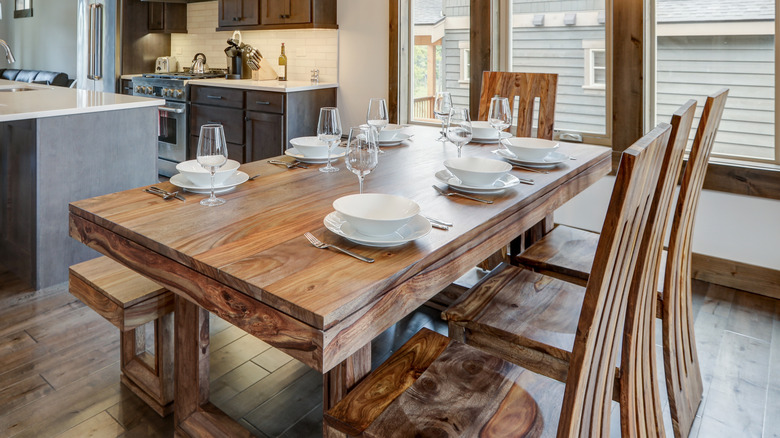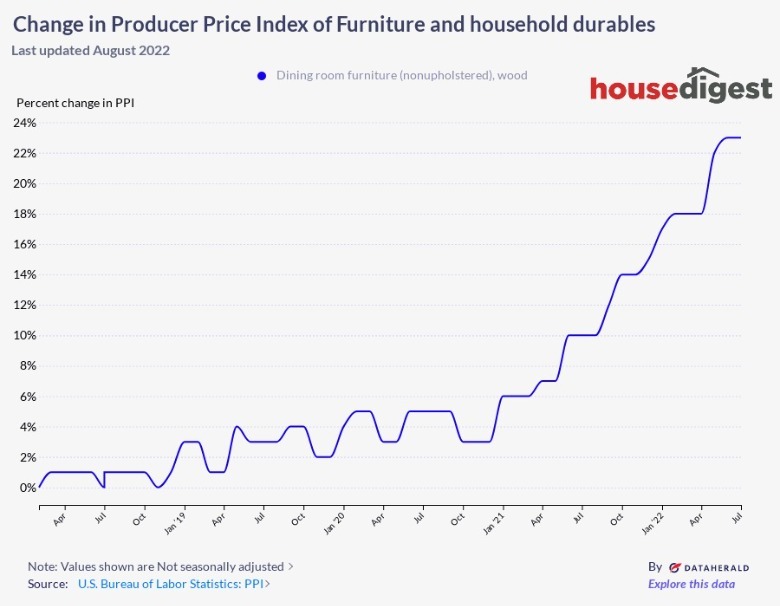The Price Of Dining Room Furniture Has Gone Up Drastically In The Last 5 Years
When designing your home, there are certain elements that you may want to spend a little extra money on in order to ensure they are of the highest quality. Take your flooring, for instance –- you don't want to choose a material that won't last a long time. Additionally, when it comes to your kitchen cabinets, you should decide upon durable options made from the best materials.
Another piece you should definitely splurge on is your dining room table, per Gabby. This investment will last you for years and years, and will become the anchor for your dining space. The best furniture pieces are those made from solid wood, as they will last the longest.
However, while you may be ready to spend a bit of money on your table, there are a few reasons why you may want to increase your budget even more. This is because, according to the 2022 Producer Price Index, the price of wooden dining room furniture has increased dramatically over the last five years. In 2022, you should expect to pay around $2,000 to $6,000 (or even up to $10,000) for a wooden dining room table alone, per Countryside Amish Furniture. Below, you'll find more information on this price increase.
Why dining room furniture is so expensive
According to the above graph made with data from the U.S. Bureau of Labor Statistics, the price of wooden dining room furniture has continued to increase drastically over the past five years. The most steady incline began in January of 2021, when numbers jumped from around 3% to 6%. From there, prices only continued to rise, and in July of 2022, they rose to 23%.
There are a number of reasons why dining room furniture has only continued to get more expensive. Bassett points out that solid wood pieces take more time to make because wood grows slowly, and the limited supply means higher prices. Further, according to Michael Helwig Interiors, another factor is the decrease in production that started during the COVID-19 pandemic in 2020. During this time, ample lumber manufacturers decreased or stopped their production, and many workers never returned to their jobs. Because of this, there continues to be less product and higher demand, which always leads to a price increase. Some may have also experienced long wait times for furniture orders, which is in part because of less product but also because there are fewer truck drivers to transport the furniture to the stores.

